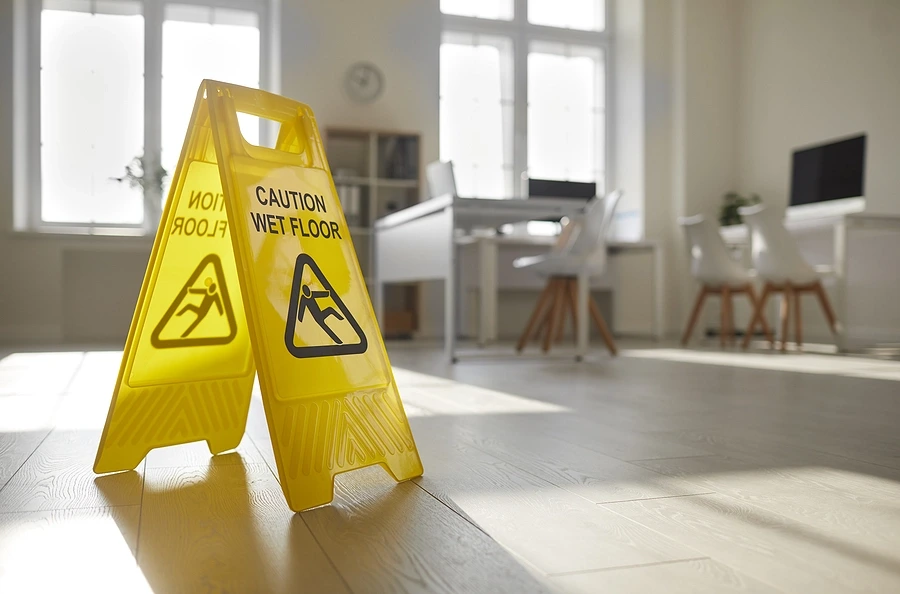
Slip and fall accidents happen unexpectedly and often cause serious injuries. Whether it occurs in a store, restaurant, office building, or public place, these incidents can leave victims with medical bills, lost wages, and physical pain. Proving liability in slip and fall cases can be challenging, especially when the facts are disputed. One of the most valuable pieces of evidence in these cases is surveillance footage.
In Oklahoma, surveillance cameras are increasingly common in commercial and public spaces. Understanding how video evidence can impact your slip and fall claim helps injured individuals build stronger cases.
Why Surveillance Footage Is Valuable in Slip and Fall Claims
Slip and fall claims often depend on showing that the property owner or responsible party was negligent. This means proving they failed to maintain safe conditions, warn of hazards, or address dangers promptly.
Surveillance footage can provide an objective view of the accident. Unlike witness statements or personal accounts, video can clearly show:
-
How and where the fall occurred
-
The conditions of the floor or walkway at the time
-
Whether there were any warning signs or barriers
-
The behavior of the injured person just before the fall
-
The presence of other hazards like spills, debris, or ice
This kind of visual evidence can confirm or challenge claims made by both sides.
Using Surveillance Video to Establish Liability
In Oklahoma slip and fall cases, the key legal question is usually whether the property owner knew or should have known about the dangerous condition and failed to fix it. Surveillance footage can help answer this by:
-
Showing how long the hazard was present before the fall
-
Demonstrating if employees were aware of the issue or attempting to address it
-
Revealing if the property owner followed proper maintenance protocols
-
Documenting if the injured person was acting recklessly or contributed to their fall
Video that clearly shows a spill left unattended for a long time or a broken step can strongly support a negligence claim.
Challenges in Obtaining Surveillance Footage
Despite its value, getting access to surveillance footage is not always easy. Property owners may be reluctant to share video that could be damaging to their case. In some cases, footage is deleted automatically after a short period or is unavailable due to camera blind spots or malfunctions.
If you suspect surveillance footage exists, it is important to act quickly. Preservation requests or subpoenas may be necessary to secure the video before it is erased.
Your personal injury lawyer can assist by identifying where cameras might be located, requesting footage formally, and working with investigators to review the content.
What to Look for in Surveillance Videos
Not all footage will be clear or relevant. When reviewing video, pay attention to:
-
The exact time and date stamp to confirm the incident
-
The area of the fall and surrounding conditions
-
Whether the camera angle shows the hazard clearly
-
The actions of employees or other people nearby
-
Any signs or warnings posted near the area
High-quality footage that captures the entire event from multiple angles is ideal but often hard to find. Even partial video can be helpful if combined with other evidence.
How Surveillance Footage Is Used in Court
If a slip and fall case goes to trial, surveillance video can be powerful evidence. Judges and juries tend to trust visual proof because it removes much of the guesswork and subjectivity.
Before being admitted, the footage must be authenticated, meaning the party introducing it must show that the video is genuine and has not been altered. Your attorney will also prepare expert witnesses or investigators to explain what the footage shows and its significance.
Surveillance videos can sway the outcome by confirming liability or disproving defenses based on the injured person’s conduct.
Limitations of Surveillance Evidence
While helpful, surveillance footage is not always conclusive. Cameras may not capture every detail or might miss critical moments if the angle is limited.
Also, video doesn’t tell the whole story about the severity of injuries or the physical impact of the fall. Medical records and expert testimony remain essential to prove damages.
Some defendants may argue that the video shows the injured person was careless or contributed to the accident, which could reduce compensation under comparative fault rules.
Preserving Other Evidence Alongside Video
Surveillance footage works best when combined with other evidence. After a slip and fall, you should also:
-
Take photos of the hazard and surrounding area
-
Obtain witness statements from anyone who saw the accident
-
Keep medical records documenting your injuries and treatment
-
Report the incident promptly to the property owner or manager
-
Avoid altering the scene before documentation
This multi-layered approach builds a stronger claim and supports the video evidence.
The Role of Your Oklahoma Slip and Fall Lawyer
Navigating the legal process after a slip and fall can be complex. A knowledgeable personal injury lawyer can:
-
Identify and secure surveillance footage early
-
Review and interpret video evidence with experts
-
Use the footage to negotiate with insurance companies
-
Prepare the case for trial if needed
-
Protect your rights throughout the process
Experienced attorneys understand the importance of timely evidence preservation and know how to use surveillance footage effectively.
Conclusion
Surveillance footage plays a crucial role in slip and fall cases in Oklahoma. It provides clear, objective evidence that can prove liability, clarify how accidents happen, and counter false claims.
If you have been injured in a slip and fall accident, acting quickly to find and preserve any video evidence is vital. Working with an experienced personal injury lawyer ensures this process is handled correctly and your case is presented strongly. With the right evidence and legal support, you can pursue the compensation you deserve for your injuries and losses after a slip and fall.
